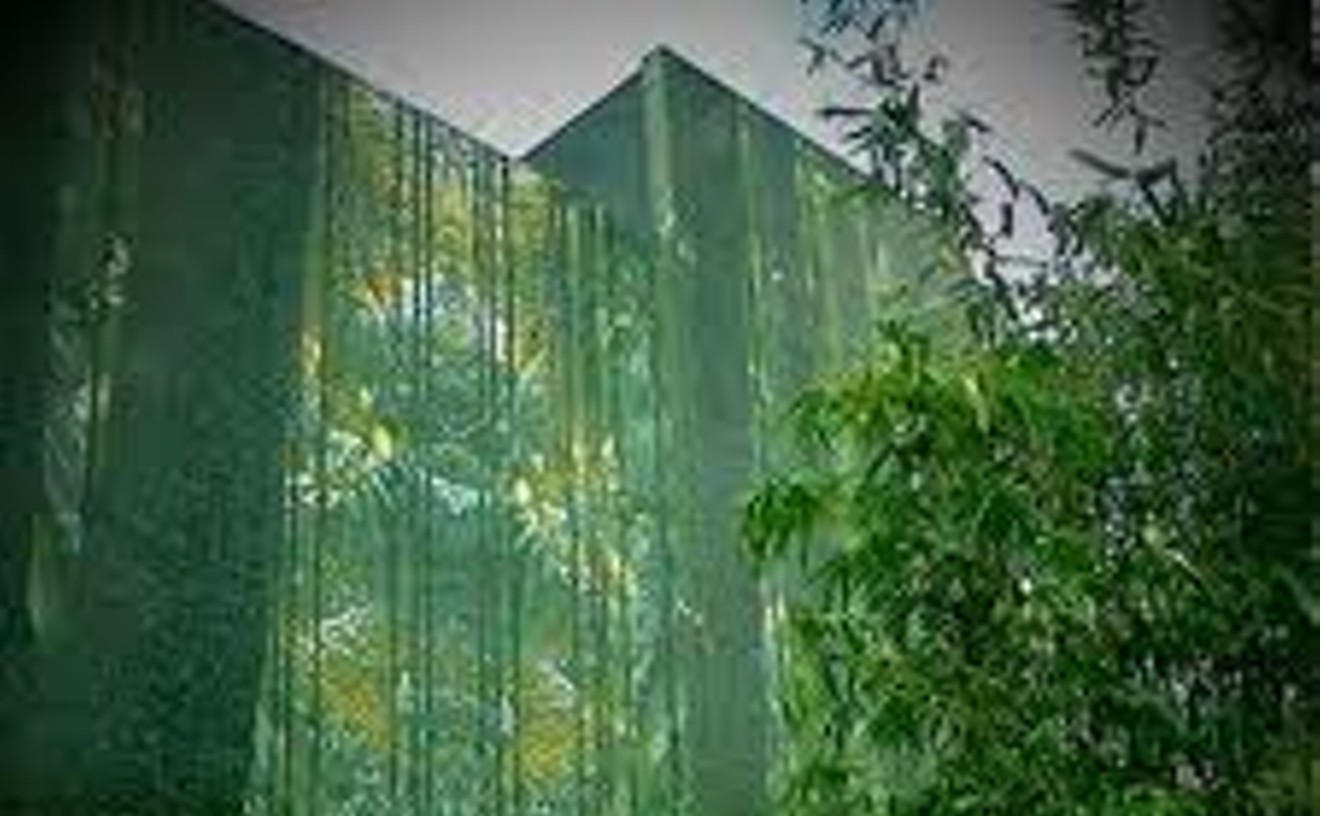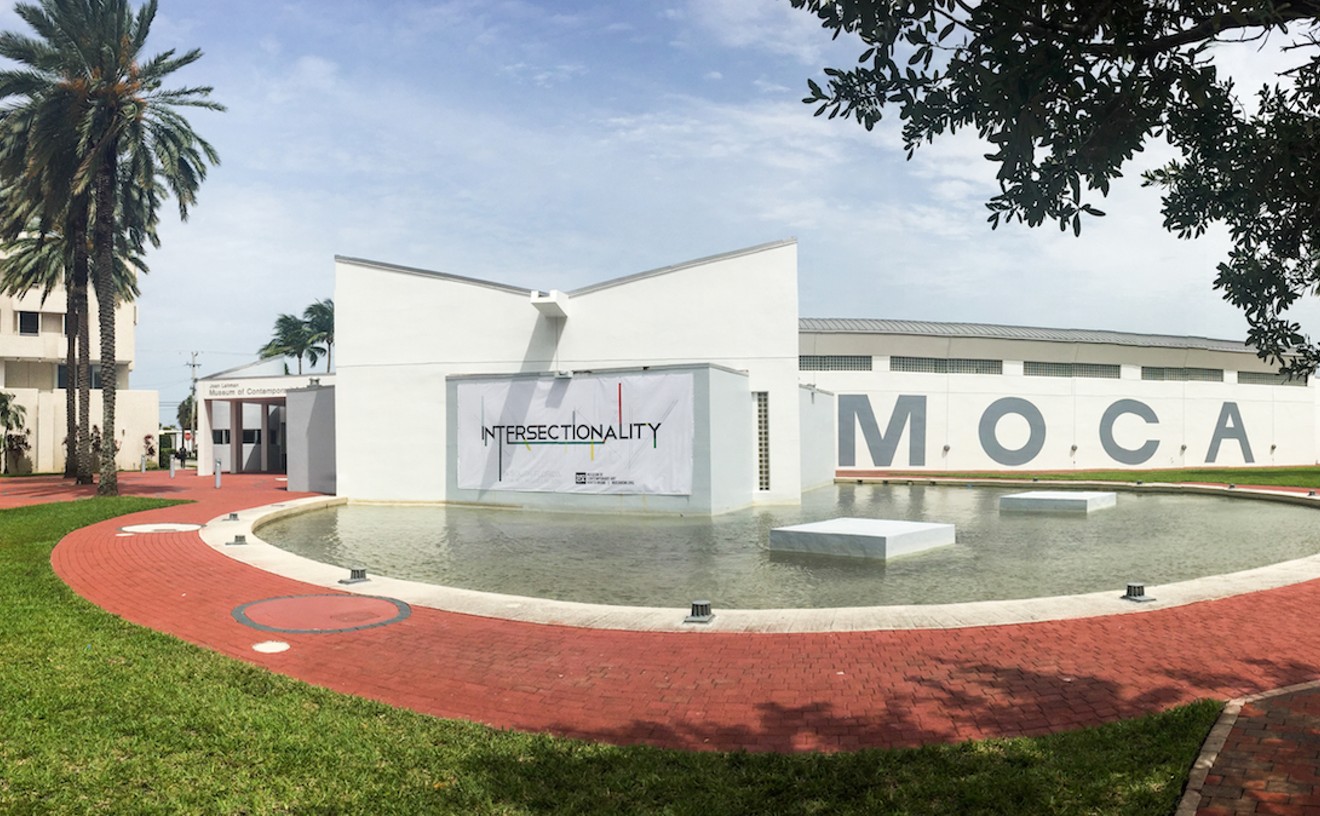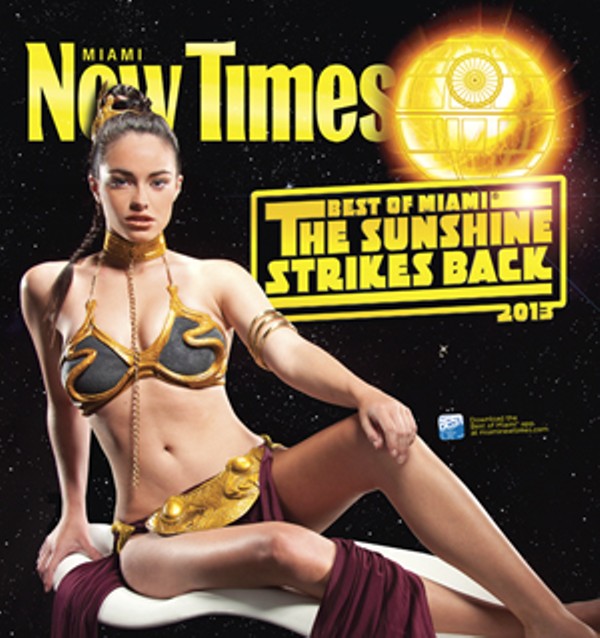Fact: No Locust Projects, no Wynwood Arts District. OK, OK, it might be tough to prove that hypothetical. But when Locust was founded in 1998, it became the first artist-run space in the area and quickly began drawing crowds seeking an alternative to stale local gallery scenes. Since then, Locust has been an alt-haven where artists have been able to take risks early in their careers. Locust has presented work from nearly 250 local, national, and international names and mounted more than 125 exhibits. The nonprofit has become the largest experimental contemporary arts organization in the Southeast. It's not unusual now for shows that start at Locust to rocket to bigger and bigger platforms. Consider Theaster Gates, whose "Soul Manufacturing Corporation" debuted at Locust this past November and drew droves of Art Basel cognoscenti to the gallery. It went on to earn slots in Philadelphia's Fabric Workshop & Museum and London's Whitechapel Gallery. Locust's Out of the Box public art initiative has also made contemporary art accessible to the masses by installing site-specific artworks on billboards and bus shelters across the county. Even if Wynwood would have happened without Locust, no one can claim it hasn't been the engine powering the neighborhood to relevance.
Best Mural
The Universal Aloha Wall by Estria and Prime
There's a tropical oasis in the middle of Wynwood. The grass there is typically patchy and gravelly. The neighboring buildings look stark and boxy. But gaze upon the east-facing wall of a warehouse just one block from the heart of the Second Saturday Art Walk, and you're transported to a sci-fi version of a lush, mountainous island an entire continent away. The Universal Aloha Wall, created by Hawaiian artists Estria and Prime, with an assist by local street artist Trek6, was completed during Art Basel 2012 as part of Heineken's Open Your World Mural Project. But it quickly became one of the most widely viewed walls in Wynwood — a big honor in a neighborhood slathered in graffiti murals. That's partly owing to Heineken's promotional efforts, hosting a pop-up party at the site on the busiest Second Saturday of the year. It's partly owing to Fabolous' music video "Life Is So Exciting," a love letter to Art Basel in Miami that shows the rapper hanging out with an entourage of sexy ladies in front of the mural. But it's also owing to the trippy design of the mural itself. Estria and Prime painted a Hawaiian landscape, sure — but they also included a colorful blue-and-orange lava spill on one side and a giant burning sun that looks like an eyeball on the other. The sky undulates from a sparkling, purple-tinged nighttime scene to a clear, blue, sunny day and back again as your eyes scan from left to right. And on top of it all, imperceptible up close but obvious when observing the wall from across NW Third Street, there's an outline of the word aloha overlaid across the entire width of the piece. It's not a traditional Miami welcome, but it's still a welcome sight.
Best Art Fair
Miami Project
During Art Basel, spectacles are a dime a dozen. Think of pink snails, artist-designed carnivals, sex-themed roller coasters, and controversially sourced Banksy exhibits. More rare is art that's arresting purely for its artistic merit. That's just what Baselgoers discovered at Miami Project Art Fair, which quietly set up shop in the ever-expanding cluster of midtown art-fair tents for its Basel debut in 2012. The newbie fair filled its 65,000-square-foot space with works from 65 galleries. Among them, artist Alejandro Cartagena showed his Car Poolers series, poignant photographs captured from a highway overpass documenting Mexican day laborers transported to and from work in pickup truck flatbeds. Nina Katchadourian's Lavatory Self-Portraits in the Flemish Style, which are exactly what they sound like — pictures taken in airplane bathrooms showing the artist dressed in Dutch-period garments made of tissue paper — added a bit of tongue-in-cheek modernity to Renaissance-era portraiture. And Miami native Jen Stark returned from L.A. with her trademark colorful paper sculptures. Miami Project did get away with a few stunts: Karen Finley spent the fair's run painting canvases inspired by "sext" messages, and Joe Zane displayed a taxidermied Chihuahua dressed as a princess. Still, of all the fairs during Art Basel in 2012, this one most gracefully straddled the line between respectability and entertainment. Is classy restraint the next hot Art Basel trend? Doubtful. But at least you'll know where to find it in 2013 — Miami Project will return during Art Basel this year.
Best Public Art
Johnny Robles' CIFO Mural

The first thing most visitors to CIFO notice is a sweeping exterior mural of tropical foliage composed of more than a million one-inch glass tiles. It's dazzling, but miss out on Johnny Robles' massive, block-size freestyle piece on an adjacent wall at your own risk. Created in partnership between CIFO and Primary Flights in 2011, Robles' wall-swallowing opus on NW Tenth Street depicts the tremulous balance between urban development and South Florida's vibrant environment. Robles employs a luminous tropical palette to create abstract imagery of children playing in mangroves amid flamingos, porpoises, and tortoises. The painting appears to defy gravity as the images melt beneath a baking sun and flow toward the earth below to "begin a new cycle of life," Robles says. The artist found inspiration for his painting from childhood memories of playing outdoors in the Sunshine State, unlike a new generation of urban kids hypnotized by technology. If you can't put down your iPhone and head for the Glades, at least check out Robles' work.
- 1018 N. Miami Ave., Miami, 33136 Map
- 305-455-3380
- www.cifo.org
Best Artist
Agustina Woodgate
Few artists have scaled the summit of the Magic City's booming cultural scene as rapidly as Agustina Woodgate. Since arriving in Florida from her native Argentina in 2004, Woodgate has combined a conceptual rigor and an inherent knack for experimentation. Often blurring genres from installation to performance, video, and mixed-media, Woodgate has partnered with dealer Anthony Spinello to spin a fresh vision in Miami. Her projects range from a lofty watchtower crafted from 3,000 hand-fashioned bricks of human hair to psychedelic tapestries of multicolored plush teddy bear pelts. For her "poetry bombing" project, Woodgate stealthily visited local thrift stores, hid among the racks, and clandestinely stitched tags inscribed with verse into the clothes. Woodgate's works have been exhibited at venues as far-flung as the Montreal Biennial and Berlin's KW Institute for Contemporary Art. Last summer, she teamed up with a group of international collaborators to transform a derelict Cold War-era German amusement park into a multimedia wonderland. At the most recent Art Basel Miami Beach, Woodgate became one of the rare local names to represent the creative talent brewing in the 305. Her exhibit "New Landscapes" presented sanded-down maps and strikingly re-envisioned new representations of the world. And like the tens of thousands of people from all points of the compass who descended on Basel and experienced Woodgate's distinct vision, we were enthralled.
Best Dance Photography
"Dance This Way"

Mikhail Baryshnikov is a master of movement. After reinvigorating ballet in the Soviet Union, he defected to the West and went on to dance with major companies worldwide before becoming director of the Baryshnikov Arts Center in the Big Apple. During the past several decades, the Latvian-born hoofer also honed his eye as a lensman, capturing with the camera his passion for dance in all its forms. At Nader, Baryshnikov's solo photography show, "Dance This Way," featured pulsating pictures of ballet, hip-hop, and modern dance performers from across the globe. Baryshnikov delivered a backstage view of some of the dance realm's most iconic troupes. His solo boasted images of traditional hula dancers and Brazilian hip-hoppers. A fiery flamenco dancer shot in Madrid and a couple engaged in a scorching bachata in the Dominican Republic filled out the dance card as Baryshnikov showed once again that when it comes to conveying the fluid beauty of a body's rhythmic flow, few can match his sensitivity for the subject — whether onstage or behind a camera.
- 62 NE 27th St., Miami, 33137 Map
- 305-576-0256
- garynader.com
Best Gallery Exhibit
"Willy Ronis: Paris"
There's a reason the simple, unpretentious show "Willy Ronis: Paris" drew hordes of gawkers during Art Basel 2012. Ronis, who was a contemporary of Henri Cartier-Bresson and Robert Doisneau, created images of postwar France that were controversial to contemporaries but have since proven to be timeless. At the Dina Mitrani Gallery, Ronis' black-and-white pictures of common street life showed working-class people in a country humbled by poverty and wracked by social unrest while the war-ravaged nation was in the process of reconstruction. The tightly curated exhibit featured 25 classic gems, including the infectiously exuberant Le Petit Parisien (1952), depicting a young boy wearing shorts and a vest as he skipped giddily along a street while lugging a baguette almost his size. Mitrani collaborated with Santa Monica dealer Peter Fetterman to organize the exhibit last December, proving that for lovers of both contemporary and classic photography, her Wynwood space is a must-visit.
- 7325 N. Miami Ave., Miami, 33150 Map
- 786-486-7248
- dinamitranigallery.com
Best Book-Based Exhibit
"Lock Them Out and Bar the Door. Lock Them Out Forevermore."
Manny Prieres' gothic-inspired solo show, "Lock Them Out and Bar the Door. Lock Them Out Forevermore," borrowed its quixotic title from William S. Burroughs and a phrase he uttered while narrating the 1968 re-release of Häxan, a 1922 movie by Danish filmmaker Benjamin Christensen. The Dane's celluloid scream was originally outlawed because it portrayed sacrilegious rituals and demonic possessions, not to mention imagery of self-flagellation, forbidden sexual gestures, and Inquisition-sponsored torture. Tearing a chapter from the banned and profane, Prieres re-created the covers of more than 30 once-outlawed books by employing elements of drawing, graphic design, silk-screening, and printmaking to craft his elegant opuses. The Miami-based talent's illicit covers ranged from Animal Farm to Slaughterhouse-Five, Tropic of Cancer, Brave New World, and Lolita, reminding us of an age before Twitter and Facebook vanquished the evils of censorship in the West.
- 2930 NW Seventh Ave., Miami, 33127 Map
- 646-780-9265
- spinelloprojects.com
Best Museum Exhibit
"Liber Insularum"

"Liber Insularum," Bill Viola's first major U.S. museum survey since 2003, demonstrated the power of art to uplift the spirit. His sprawling video installations at the Museum of Contemporary Art also marked the first time since his 1997 Whitney Museum retrospective that his most important works had been corralled under one roof. At MOCA, Viola's sensory-engulfing installations were inspired by a 15th-century Florentine cleric's tome called The Book of the Islands of Archipelago, which records six lonely years he spent wandering the Aegean. Viola, who typically explores concepts of death and regeneration while embracing both Eastern and Western mystical and spiritual traditions, departed from the cleric's peripatetic wandering to convey his own notion of a conceptual journey across a constantly transforming global landscape. The exhibit transported viewers to a space where universal notions of suffering, joy, and peace combined in a meditative experience of the unconquerable strength of the human soul.
- 770 NE 125th St., North Miami, 33161 Map
- 305-893-6211
- mocanomi.org
Best Alternative Art Space
Dimensions Variable
Operated by Adler Guerrier, Leyden Rodriguez-Casanova, and Frances Trombly, Dimensions Variable has been filling a void in an ever-more commercial local scene since 2009. The gallery is also a pioneer of the exodus from the Design District and increasingly unaffordable Wynwood to downtown Miami. Since relocating to the downtown Arthouse building last year, Dimensions Variable has continued expanding its brand of conceptually provocative and experimental offerings, drawing not only art lovers but also other local talent to join them in the neighborhood. This season, DV has hosted "Cut Outs," an exhibit of new works by Jenny Brillhart and Carolyn Salas that tinkered with notions of form and balance while questioning the source of the objects the duo created. Another show that commanded attention at DV was "A Rake's Progress" by London-based artist Julie Hill. She presented a contemporary adaptation of William Hogarth's 18th-century satirical work of the same name, skewering the global financial implosion by featuring a roomful of ambiguous open letters, shattered credit cards, and financial ephemera suggesting the onset of panic. Dimensions Variable has also been involved with international and national artist residencies, workshops, and a slew of community outreach initiatives as part of its ongoing mission to advance cultural discourse in South Florida.
- 101 NW 79th St., Miami, 33150 Map
- 305-615-3532
- dimensionsvariable.net





